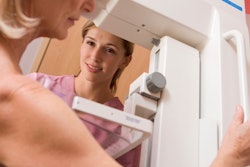
In spite of Turkey's growing income levels, cancer screening coverage continues to be relatively poor among women, and their educational level, access to social security, and lifestyle factors have a crucial impact on screening rates, researchers have found.
Their study, published online on 26 June in the Asia Pacific Journal of Public Health, examined the influence of sociodemographic factors. It revealed that socioeconomic background and geographic location are associated with screening rates.
The research showed that women older than 30 with access to bigger incomes and who are educated, maintain a healthier diet, and exercise were more likely to undergo a Pap smear test and mammography. Married women were also more likely to be screened than unmarried women. Conversely, poorer women over this age with little education and living in eastern, predominantly rural, regions were less likely to undergo cervical smears and mammography screening.
The authors state that health education and awareness programs as well as the provision of screening services need to be improved for certain sectors of the female population in Turkey, particularly in the rural east.
The researchers, led by Dr. Kaan Sözmen from the faculty of medicine at Katip Çelebi University, Çigli-Izmir, used data from the National Chronic Diseases and Risk Factors Survey conducted by the Ministry of Health in 2011 that involved nearly 18,500 individuals. From this cohort, Sözmen and colleagues analyzed the data for 6,846 women older than 30. Survey responses pertained to age, education, marital status, area of residence (rural/urban plus region), and also health, such as long-term underlying disease (diabetes, cancer, depression, cardiac/pulmonary disease, stroke, etc.), waist circumference, smoking status, fruit and vegetable intake, and exercise.
Of the 6,846 women analyzed in the study, the researchers found that 22% had ever undergone a Pap smear test, and 19% had ever undergone a mammography exam -- this in a country where female breast cancer mortality increased with an annual percent change of 2.8 between 1987 and 2008, according to the authors. Some of the key findings are shown in the table below.
| Percentage of participants screened for breast and cervical cancers | ||
| Mammography | Pap smear test | |
| Total of 6,846 | 19% | 22% |
| Single women | 5.3% | 9.4% |
| Married women | 24.2% | 19.5% |
| Social security | 19.6% | 22.5% |
| No social security | 11.3% | 15.3% |
| Urban dwellers | 22.2% | 26.9% |
| Rural dwellers | 11.6% | 11.1% |
| Inhabitants of eastern regions | 11.4% | 14.3% |
| Inhabitants of western regions | 21.5% | 25.5% |
The mean age of the study participants was 49.1 ± 13.9, and more than half (56.1%) were between 30 and 59 years old. Nearly three-quarters (78.4%) were married, and nearly two-thirds had an education level equal to primary school or less. In total, 70.9% of the participants lived in urban areas, with 55.1% in the western part of Turkey. About 13% of women were active smokers, 19.6% were physically active, and 14% of them consumed at least five portions of fruit or vegetables a day. Nearly 59% of the women had a high waist circumference (greater than 88 cm) and 33% had at least one or more chronic conditions.
Demographic and socioeconomic factors affecting screening
The researchers found that single women had significantly lower screening rates for both breast cancer (5.3%) and cervical cancer (9.4%) compared with married women (24.2% for breast cancer and 19.5% for cervical cancer), respectively.
Individuals with less than a high school level of education had significantly lower screening rates compared with women with at least a high school level of education.
Women with social security had higher screening rates (22.5% for smear and 19.6% for mammography) than those without insurance (15.3% for smear and 11.3% for mammography).
Physically active individuals and those who ate at least five portions of fruit and vegetables had significantly higher screening rates compared with their unhealthier counterparts.
Participants living in urban areas had significantly higher screening rates for breast cancer (22.2%) and cervical cancer (26.9%) compared with women living in rural areas (11.6% for breast cancer and 11.1% for cervical cancer). Those living in eastern regions were significantly less inclined to get screened (14.3% for smear and 11.4% for breast) than those living in western regions (25.5% for cervical cancer and 21.5% for breast cancer).
Screening prevalence also increased linearly with the number of chronic conditions. High waist circumference was related to higher screening rates for breast cancer; however, it did not significantly differ for smear rates.
A network of Cancer Early Diagnosis, Screening, and Training Centers in each city in Turkey has contributed to improving cancer screening rates and cancer awareness among the Turkish population. Population-based screening and public training programs for breast, cervical, and colorectal cancers within these centers are free of charge. However, the authors noted that several demographic and socioeconomic factors such as age, education, marital status, health insurance, and income level would appear to be predictors of participation in cancer screening.
Identifying determinants of participation in cancer screening could be helpful for detecting vulnerable subgroups in the community, according to Sözmen and colleagues.
"Screening uptake needs to be improved among women in rural settings and in the east region by increasing awareness in the community and enhancing provision of cancer screening services," noted the authors, adding that smear tests and mammography screening remain generally low among Turkish women and that any cancer screening at the free centers was predominantly "opportunistic."
"The impact of the national screening program introduced by the Ministry of Health recently should be evaluated periodically," they concluded.



















